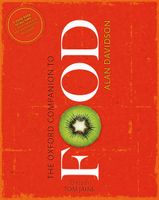Advertisement
Halva
Published 2014
In 7th-century Arabia, the word meant a paste of dates kneaded with milk. By the 9th century, possibly by assimilating the ancient Persian sweetmeat afroshag, it had acquired the meaning of wheat flour or semolina, cooked by frying or toasting and worked into a more or less stiff paste with a sweetening agent such as sugar syrup, date syrup, grape syrup, or honey by stirring the mass together over a gentle heat. Usually a flavouring was added such as nuts, rosewater, or puréed cooked carrots (still a popular flavouring). The finished sweetmeat could be cut into bars or moulded into fanciful shapes such as fish.


